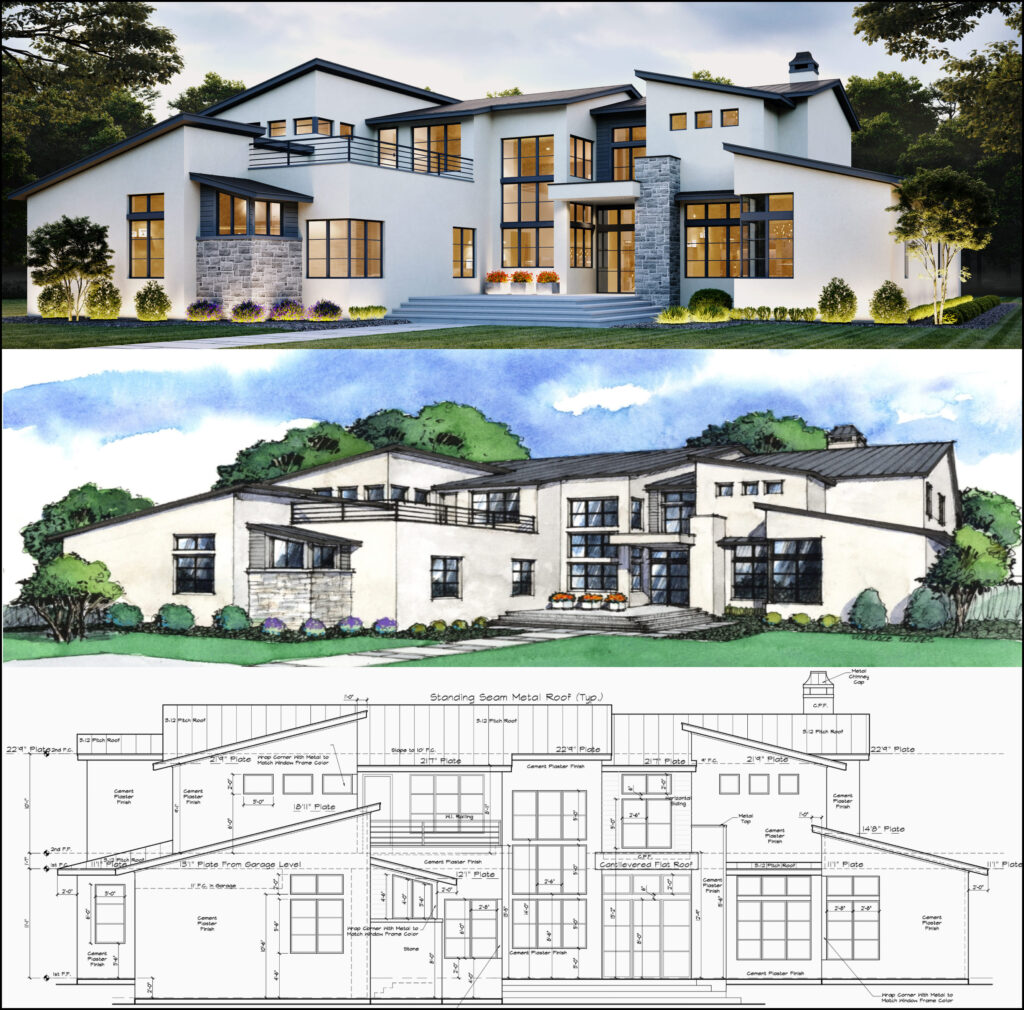The Influence of Technological Advancements on the Style Practices of Contemporary Architects
The rapid evolution of technological devices has dramatically reshaped the layout landscape for modern designers, fostering extraordinary degrees of innovation and sustainability. Discovering these characteristics discloses a nuanced interaction in between modern technology and standard design techniques, triggering a more detailed assessment of what the future holds for architectural methods.
Advancement of Architectural Tools
How have building devices changed the layout and building and construction processes over the centuries? The advancement of architectural tools has actually dramatically influenced the performance, accuracy, and imagination of layout and building and construction.
With the development of the Renaissance, the intro of the compass and the protractor marked a pivotal change. These devices enabled architects to achieve greater accuracy in their styles, assisting in the development of even more detailed and proportionate buildings. The Industrial Change further reinvented building method with the introduction of mechanized tools and products, permitting bigger and extra ambitious tasks.
In the 20th century, the development of computer-aided layout (CAD) software program changed the landscape once more, supplying architects with unprecedented capabilities in modeling and visualization. Today, progressed devices such as Building Details Modeling (BIM) and parametric layout software program continue to press the limits of building development, enabling an extra incorporated approach to style and building procedures.
Improved Cooperation in Design
As modern technology continues to progress, enhanced cooperation in layout has become a keystone of contemporary architectural method. The integration of electronic devices such as Structure Info Modeling (BIM), cloud-based systems, and progressed visualization software has transformed the means designers, engineers, and stakeholders engage throughout the design process. These tools promote real-time interaction, permitting groups to share concepts, adjustments, and responses instantaneously, no matter geographical place.

In addition, interdisciplinary partnership has actually been structured via these technical advancements, enabling designers to work extra very closely with other specialists, such as urban planners and ecological specialists. The result is a more cohesive technique to make that considers numerous perspectives and expertise. Eventually, enhanced collaboration in design is not merely a pattern; it is crucial for developing innovative, useful, and visually pleasing design in a significantly complicated world.
Sustainability Via Technology
Sustainability in design has actually increasingly ended up being linked with technical innovation, driving the industry toward ecologically responsible methods - cda architects. Contemporary designers are leveraging sophisticated innovations to lessen environmental impact while reference improving the performance of buildings. One famous example is the usage of Building Details Modeling (BIM), which allows for precise preparation and resource allotment, reducing waste during building and promoting power performance throughout a structure's lifecycle
Moreover, smart materials and energy-efficient systems are being integrated right into designs to enhance resource use. Technologies such as solar batteries and environment-friendly roof harness sustainable energy resources, adding to lowered carbon impacts. In addition, the application of synthetic intelligence in layout procedures allows designers to mimic and examine power consumption, guiding decisions toward more lasting results.
The assimilation of lasting modern technologies not just aligns with international environmental goals however additionally fulfills an enhancing need from consumers for environment-friendly remedies. As designers embrace these innovations, the focus moves towards producing spaces that are not just aesthetically pleasing however likewise functionally lasting, thus redefining the criteria of contemporary style. By doing this, modern technology acts as a stimulant for sustainability, making it possible for designers to design structures that respect and boost the native environment.
Obstacles in Execution
While technological click to read innovations in architecture hold terrific assurance for boosting sustainability, their implementation typically experiences considerable obstacles - cda architects. One main obstacle is the steep understanding contour linked with new technologies. Architects and building and construction experts may call for extensive training to efficiently utilize advanced software and tools, which can postpone job timelines and enhance costs
Additionally, the combination of arising technologies, such as Building Information Modeling (BIM) and sustainable products, usually requires partnership throughout multidisciplinary teams. This collaboration can be impeded by differences blog here in expertise, workflows, and communication styles, causing potential conflicts and ineffectiveness.
Financial restrictions even more complicate the adoption of cutting-edge innovations. Several building companies, especially smaller sized ones, might lack the resources to spend in innovative devices, restricting their ability to take on larger firms that can afford such investments.
Additionally, governing structures and building ordinance may not equal technical innovations, developing uncertainty and potential conformity concerns. This difficulty can inhibit engineers from totally accepting brand-new modern technologies, as the risk of non-compliance might surpass the advantages. Attending to these implementation difficulties is crucial for the successful assimilation of technical improvements in modern building practices.
Future Fads in Design
The challenges related to the implementation of brand-new innovations in architecture have triggered a reevaluation of future fads within the industry. As designers navigate problems such as sustainability, urbanization, and social equity, they are increasingly taking on innovative innovations to enhance design performance and environmental performance.
One prominent pattern is the integration of man-made intelligence (AI) in the design process. AI tools can evaluate vast datasets to educate layout choices, enhancing both imagination and performance. Building Details Modeling (BIM) proceeds to evolve, enabling real-time collaboration among stakeholders and assisting in streamlined job monitoring.
Lasting layout techniques are likewise getting energy, with engineers concentrating on flexible reuse and regenerative design concepts that reduce source usage and waste. The unification of smart materials and renewable energy resources will better improve the strength of structures despite environment adjustment.

Final Thought
Technical innovations have actually substantially reshaped architectural style techniques, promoting improved accuracy, collaboration, and sustainability. The combination of tools such as Building Details Modeling and parametric style software program, alongside expert system and wise materials, empowers designers to deal with complicated challenges better. While implementation may provide particular barriers, the ongoing advancement of these technologies assures to drive innovation in architecture. Future fads will likely further emphasize sustainability and effectiveness, inevitably redefining the constructed setting.